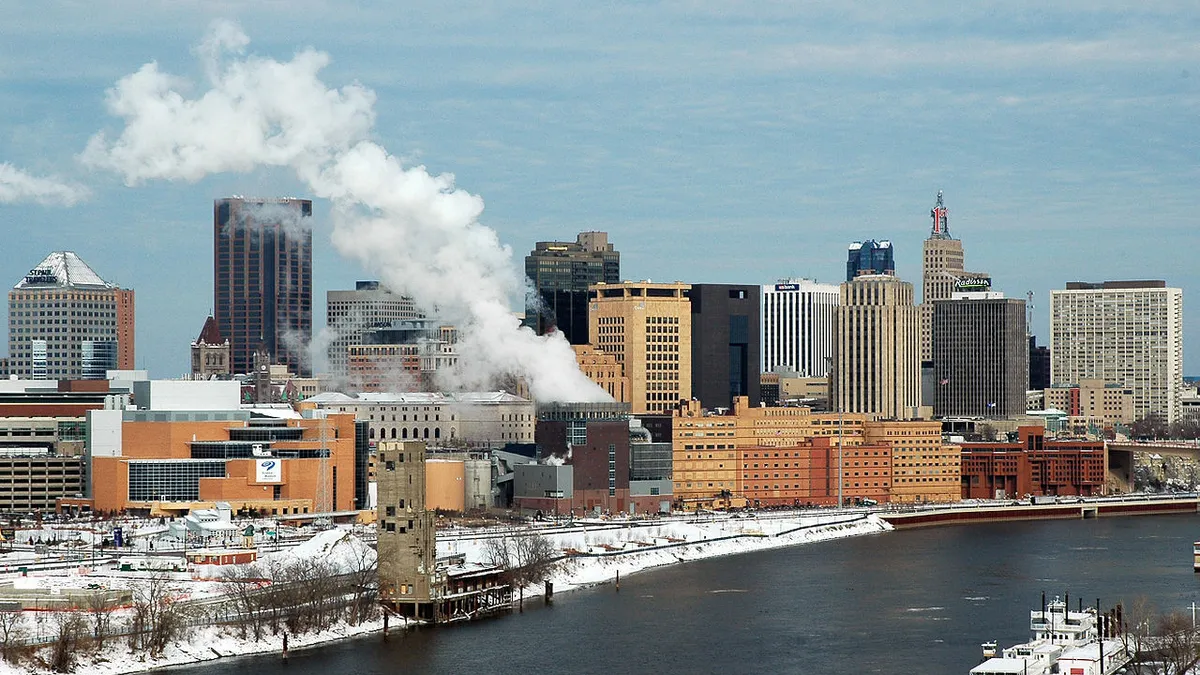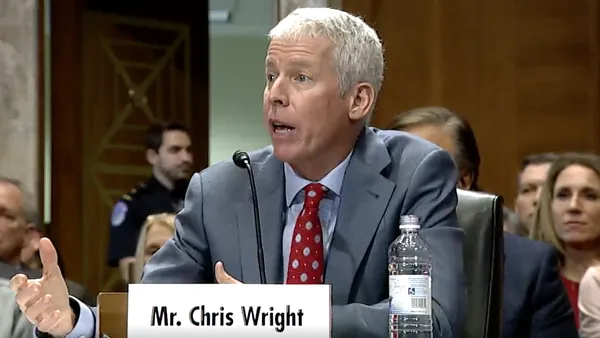Dive Brief:
- St. Paul, MN has set a goal to make all public buildings carbon neutral by 2030 and all private buildings carbon neutral by 2050, reports the Twin Cities Pioneer Press.
- A big part of the emissions cuts will come from local utility Xcel Energy’s plan to produce 85% carbon-free power by the year 2030, through an expansion of wind and solar and existing nuclear power plants. The city will also promote energy efficiency measures in city-owned residential buildings and large commercial buildings, reducing the amount of power it needs.
- St. Paul has created a competition for private building owners called "Race to Reduce," which monitors and compares energy use across comparable structures around the city.
Dive Insight:
Cities around the country have set ambitious emissions reductions and clean energy goals, helping to fill the gap after the Trump administration announced the U.S. would withdraw from the Paris climate accord. Boston and Seattle, for example, have vowed to become carbon neutral by 2050, while Pittsburgh plans to cut energy and water use by 50% by 2030. The We Are Still In coalition has some 200 mayors vowing to keep up the goals of the Paris climate accord.
St. Paul’s plan specifically targets buildings, an area where governments may have more power. A two-year study of carbon emissions within city limits found that physical buildings accounted for 52% of the city’s carbon footprint, outpacing transportation (which accounted for 37%). As part of the plan, large municipal buildings will be urged to take steps like reducing air conditioning use or drawing from alternative sources, like solar power.
That could be easier than pushing carbon-neutral transportation, which depends largely on what cars residents buy and choose to drive. Cities can also push for more renewable energy through their relationships with utilities; Boston has spearheaded a coalition of cities looking to bulk purchase clean energy, driving down costs for everyone in the group.
The energy plan will also have the benefit of aiming to reduce energy costs for residents. Russ Stark, the city’s chief resilience officer, told the Pioneer Press that he wants to ensure that low-income residents pay no more than 4% of their income on energy costs.
A recent study from the University of East Anglia in Norwich, England, found that the city level would be most effective for emissions cuts, with study authors encouraging city-by-city emissions plans rather than country-driven ones. Expect more cities to look at what action they can take, especially in the absence of federal leadership.











